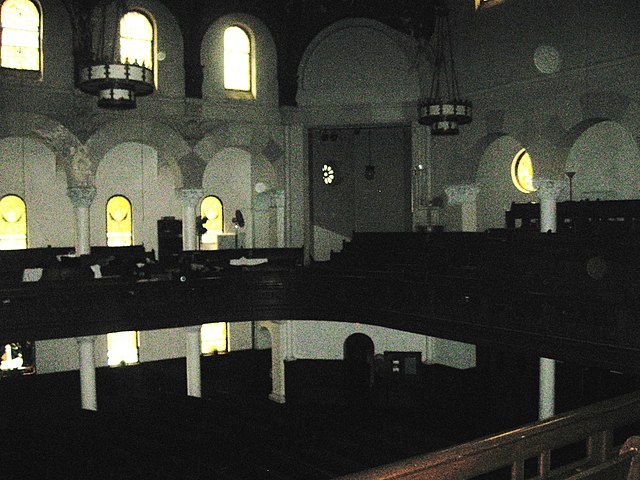A sanctuary, in its original meaning, is a sacred place, such as a shrine. By the use of such places as a haven, by extension the term has come to be used for any place of safety. This secondary use can be categorized into human sanctuary, a safe place for people, such as a political sanctuary; and non-human sanctuary, such as an animal or plant sanctuary.
Sanctuary marker (S) at Holyrood Abbey, Royal Mile, Edinburgh
Ajax the Younger violates Cassandra's sanctuary at the Palladium: tondo of an Attic cup, ca. 440–430 BCE
The sanctuary at St. Mary's Cathedral, Sydney
The back of the church sanctuary at Church of St. Paul and St. Andrew.
An altar is a table or platform for the presentation of religious offerings, for sacrifices, or for other ritualistic purposes. Altars are found at shrines, temples, churches, and other places of worship. They are used particularly in paganism, Christianity, Buddhism, Hinduism, Judaism, modern paganism, and in certain Islamic communities around Caucasia and Asia Minor. Many historical-medieval faiths also made use of them, including the Roman, Greek, and Norse religions.
Altar in Roskilde Cathedral beneath by a carved reredos
Horned altar at Tel Be'er Sheva, Israel.
Ancient Greek kylix showing a hoplite offering a sacrifice before an altar, around 480 BC. Ancient Agora Museum of Athens in the Stoa of Attalus
The ancient Altar of Pergamon, reconstructed at the Pergamon museum, Berlin.








